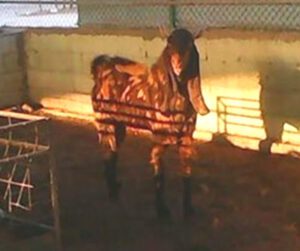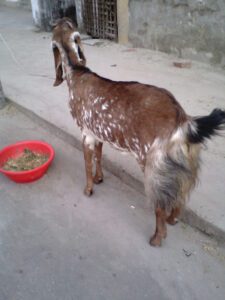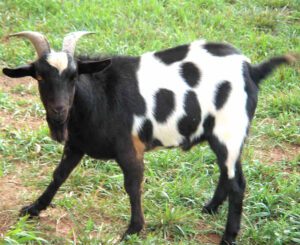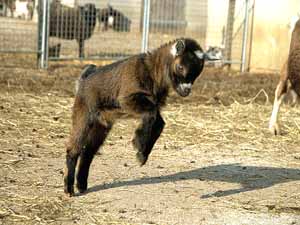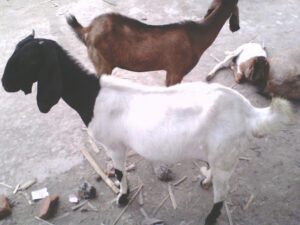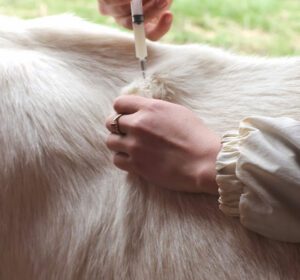The Verata goat is a dual-purpose breed of domestic goat found in Vera, Caceres, Spain. The breed is mainly raised for both meat and milk production.
Verata goat is usually smaller than the average sized goats, and mostly found in their homes in the Vera in the Caceres region of Spain. And the breed was named after it’s native place.
Although, the Verata goat is a dual-purpose breed, but it is valued especially for milk in it’s native area. Milk of Verata goats is used for cheese production purposes.
They are relatively easy to care and they have good adaptive skills. They are extremely hardy and can survive on low quality feeds. Verata goats do well on concentrated feed when graze is scarce. They also do well in the stable environments as well.
Currently, there is approximately 17000 existing Verata goats inhabiting in Spain (according to Wikipedia). And these goats are usually found in herds of 100 to 150 goats. Today the breed is pretty rare or less population available outside it’s native area. Read more information about Verata goat below.
Verata Goat Characteristics
The Verata goat is a small-medium sized dual-purpose goat breed. They have glossy, short hair and they are mainly black, chestnut or grey in coloration. And they have twisted horns that go outward, and spiral forward, and well-sprung ribs.
Verata goats generally reach a height of approximately 70 centimeters at maturity. And a mature goat on average weight 70 kg. The does are a bit shorter and lighter than the bucks. Beards are prominent on the bucks, and about 40% of the does will also have prominent beards.
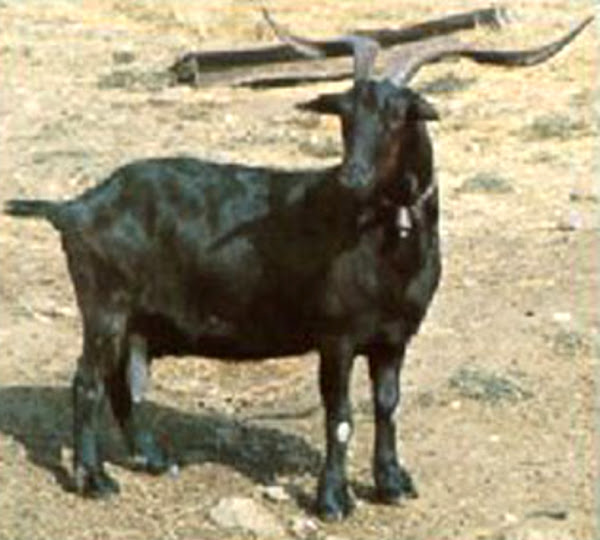
Verata goats have an erect tail, and their legs look rather small; thus, the joints look significantly larger. They also have dark, hard hooves. Photo from bib.ge
Uses
Verata goat is a dual-purpose goat breed. It is suitable for both meat and milk production.
Special Considerations
The Verata goat is usually of very good behavior. It has been known to be fairly easy to handle. The goats can adapt themselves to the different management systems. That’s why they are popular in the meat and dairy industries. They are also known to be very hardy, and can survive in many climates and temperatures.
Actually the Verata goat is best adapted to the mountain pastures. Because they have strong, long legs and they can also survive on poor and scarce feed.
The Verata goats are able to breed throughout the year, but the breeders and farmers usually breed them in October and November and again in the Spring (sometime around March).
The Verata does have a high fertility rate. And under good conditions, the does can have an average of three births every two years. The Verata does are pretty good milk producers.
On average they will produce around 150 liters of milk in a lactation period of around 175 days. The kids can be slaughtered for their meat at a very early age, for example 45 days. However, review full breed profile of the Verata goat in the following table.
| Breed Name | Verata |
| Other Name | None |
| Breed Purpose | Meat & Milk |
| Breed Size | Small-Medium |
| Doe | Usually does weight less than the bucks. |
| Buck | Around 70 kg |
| Horns | Yes |
| Climate Tolerance | All Climates |
| Coat Color | Mainly black, chestnut or grey in coloration |
| Good for Stall Fed | Yes |
| Rarity | Common |
| Country/Place of Origin | Spain |

